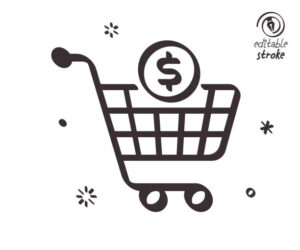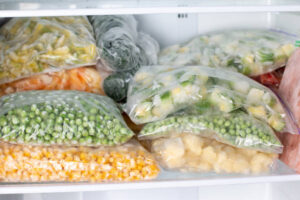The rising cost of groceries and the allure of cheaper, less nutritious options can make it challenging to stick to a healthy eating plan. But fear not! With some smart strategies and careful planning, you can enjoy a nutritious diet without breaking the bank. In this article, we’ll explore various ways to save money on healthy food products.
-
Create a Budget
 (Photo from iStock)
(Photo from iStock)
The first step towards saving money on healthy food products is to create a budget. Determine how much you can allocate for groceries each month and stick to it. Having a budget in place will help you make informed decisions and avoid impulsive purchases that can add up quickly. There are various budgeting apps and tools available that can assist you in tracking your expenses and staying within your budget.
-
Plan Your Meals
Meal planning is a powerful tool to save money and eat healthily. Take stock of what you already have in your pantry and fridge to reduce waste. Plan meals around ingredients that are on sale or in-season, as they are typically more affordable. Make a shopping list based on your meal plan and stick to it when you go to the grocery store. This will help you avoid buying unnecessary items and stay on track with your budget.
-
Buy in Bulk
 (Photo from iStock)
(Photo from iStock)
Buying certain healthy food products in bulk can be a cost-effective strategy. Look for items like rice, pasta, canned goods, and frozen vegetables that have a long shelf life. Warehouse stores and bulk food stores often offer substantial discounts for buying in larger quantities. Just be mindful of expiration dates and storage space to prevent food waste.
-
Embrace Generic and Store Brands
Don’t shy away from generic or store-brand products when shopping for healthy food. These alternatives are typically more affordable than name-brand items but often just as nutritious. Read ingredient labels and compare nutrition facts to ensure you’re making a healthy choice. You might find that the generic version of your favorite product is just as good as the branded one, but at a lower cost.
-
Clip Coupons and Use Cashback Apps
 (Photo from iStock)
(Photo from iStock)
Coupons can be a fantastic way to save money on healthy food products. Additionally, many grocery stores have their own apps or loyalty programs that offer digital coupons and discounts on healthy items. Cashback apps, such as Ibotta and Checkout 51, also provide opportunities to earn money back on select purchases. These small savings can add up over time.
-
Take Advantage of Sales and Promotions
Monitor your local grocery store’s weekly circulars and take advantage of sales and promotions. Many stores offer discounts on fresh produce, meats, and dairy products on a rotating basis. Plan your meals around these discounted items to save money while still enjoying nutritious food. It’s also a good idea to stock up on non-perishable items when they go on sale, ensuring you have a well-stocked pantry without overspending.
-
Buy Frozen Fruits and Vegetables
 (Photo from iStock)
(Photo from iStock)
Fresh produce can be expensive, especially when certain items are out of season. Frozen options are often more affordable, have a longer shelf life, and can be just as nutritious as fresh produce. Plus, they’re convenient to have on hand for quick and easy meal preparation.
-
Reduce Meat Consumption
Reducing your meat consumption can significantly lower your grocery bill while promoting a healthier diet. Opt for plant-based proteins like beans, lentils, tofu, and tempeh. When you do buy meat, choose lean cuts and consider stretching it by using it as an ingredient rather than the main focus of a meal.
-
Grow Your Own Produce
 (Photo from iStock)
(Photo from iStock)
If you have space and the inclination, consider starting a small vegetable or herb garden. Growing your own produce can be incredibly rewarding and cost-effective. Even if you don’t have a backyard, you can grow herbs and some vegetables in pots on a balcony or windowsill. Homegrown produce not only saves you money but also ensures that you have access to fresh, organic options.
-
Minimize Food Waste
Reducing food waste is a critical aspect of saving money on healthy food products. Plan your meals carefully to use up perishable items before they go bad. Store food properly to extend its shelf life, and consider freezing leftovers for future meals. Get creative with using leftover ingredients in new recipes to prevent them from going to waste.
-
Cook at Home
 (Photo from iStock)
(Photo from iStock)
Eating out or ordering takeout can be convenient but costly. Cooking at home allows you to control the ingredients and portion sizes, saving you money and promoting a healthier diet. Try batch cooking and meal prepping on weekends to have ready-made meals throughout the week. Cooking can also be a fun and rewarding activity that brings family and friends together
-
Learn Basic Cooking Skills
Investing time in learning basic cooking skills can go a long way in saving money on healthy food products. When you can prepare meals from scratch, you have greater control over the ingredients and can avoid the markup on pre-packaged and pre-cooked items.
-
Take Advantage of Leftovers
 (Photo from iStock)
(Photo from iStock)
Get creative with leftovers to stretch your budget further. For instance, use yesterday’s roasted vegetables as a topping for a salad or a filling for a wrap. Cooked rice can become the base for a stir-fry or fried rice the next day. Repurposing leftovers can save both money and time in the kitchen.
-
Don’t Shop Hungry
One of the simplest but most effective ways to save money on healthy food products is to avoid shopping on an empty stomach. When you’re hungry, you’re more likely to make impulsive and less healthy food choices. Eat a balanced meal or snack before heading to the grocery store to help you stick to your shopping list and make rational decisions.
Conclusion
Eating healthily doesn’t have to be a financial burden. By implementing these strategies and being mindful of your spending, you can save money on healthy food products while still nourishing your body with nutritious options. Remember that small changes in your shopping and cooking habits can add up to significant savings over time, making it easier to maintain a balanced and budget-friendly diet. So, start today and take control of your health and finances through smart food choices.




